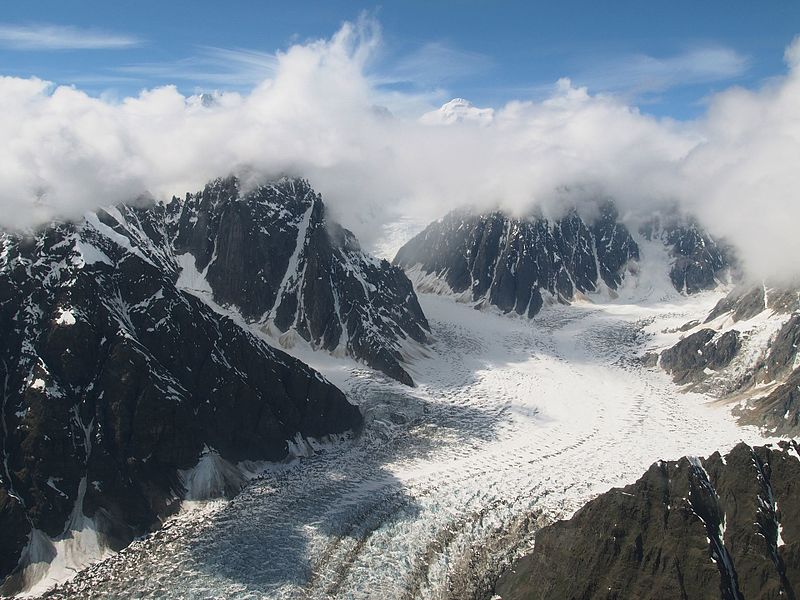
An Alaska Range glacier melted faster last century than it did in the previous 300 years. That’s the finding of a study that analyzed ice cores drilled on Mt. Hunter.
Lead author, Dartmouth College research assistant Dominic Winski says the glacial ice cores provide a unique high altitude temperature record for the North Pacific region.
“So, this sort of provides the first window in what’s going on in the upper atmosphere, over Alaska,” Winski said. “And it’s even more rapidly changing than what’s going down in the lowlands.”
Winski says Hunter provides an ideal location to gauge the affect of climate change at high altitude.
”Any sort of winds or precipitation that come off the Pacific wind up being deposited in the front of the Alaska Range, right near where we set up on Mt. Hunter,” Winski said. “And, more specifically, we needed a site that had the right topography and the right glaciology to be able to recover a nice ice core.”
Each glacier exerts unique forces that compress ice, but Winski says even before computing those effects, evidence of faster seasonal melting was apparent in the ice cores, telling a story of climate change.
“Before the 20th century, these melted ones were extremely rare, and sometimes you’d go for decades or more and it would never melt,” Winski said. “And that was obvious initially when we were counting all of these layers, and then we spent the next few years making all these corrections and really convincing ourselves that the trend that seemed so obvious was, in fact, a real trend.”
Winski says the increased melting corresponds with more frequent El Nino conditions in the equatorial Pacific. The ocean warming forces warm air into the upper atmosphere, where it flows toward the poles, running into high peaks like Mt. Hunter. In an effort to gain a longer term perspective, Winksi says the research team hopes to analyze even further down the Mt. Hunter ice cores.
”This ice core that we drilled on Mt. Hunter actually goes back at least 1,200 years, but potentially thousands more,” Winski said.
Winski says if the team can interpret the ultra-compressed ice, it will provide better context to the last centuries warming relative to a much longer time span. Dartmouth College, and the Universities of Maine and New Hampshire collaborated on the National Science Foundation funded research. It’s published in the Journal of Geophysical Research: Atmospheres.
Dan Bross is a reporter at KUAC in Fairbanks.




